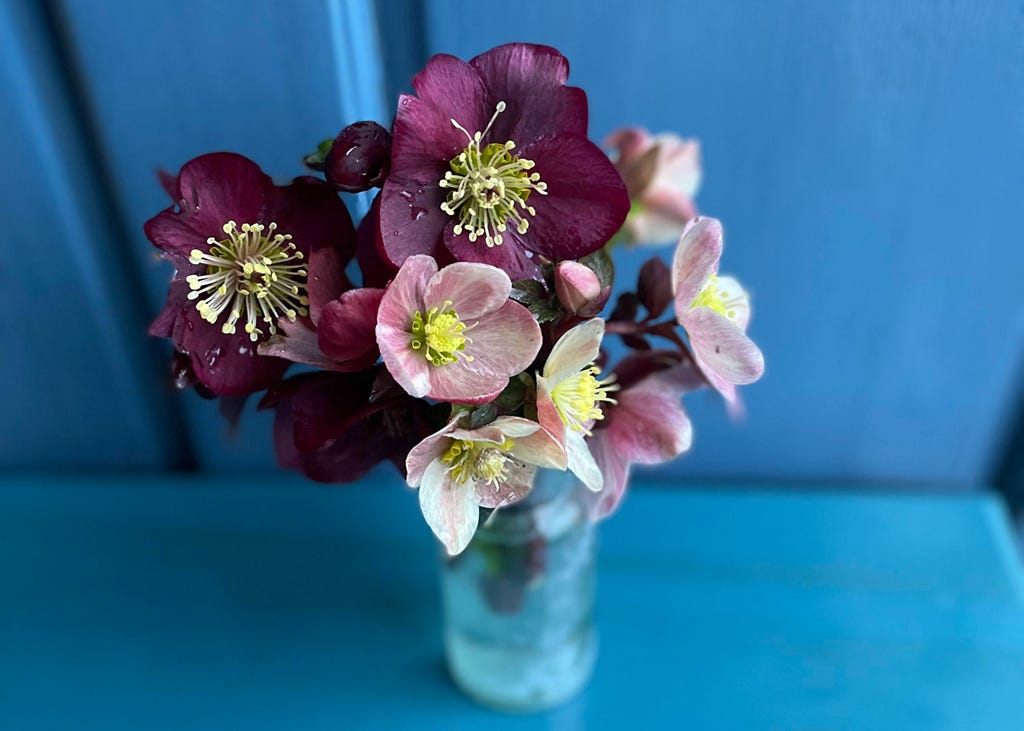
Flower spotlight: Helleborus (Hellebores, Lenten Rose)
Best qualities: They flower in winter - mid February and March in New England - and they come in a variety of unusual and antique-y colors in both single and double form. Those in the picture above were harvested this week - such a cheery boost to the grey, misty March days.
Varieties Pictured: Helleborus Frostkiss Anna’s Red, Helleborus Pink Frost
Other Favorite Varieties: All of breeder David Culp’s Brandywine varieties, Helleborus Wedding Party Mix, Helleborus Honeymoon Sandy Shores, Helleborus Frostkiss Molly’s White, Helleborus Pink Parachutes
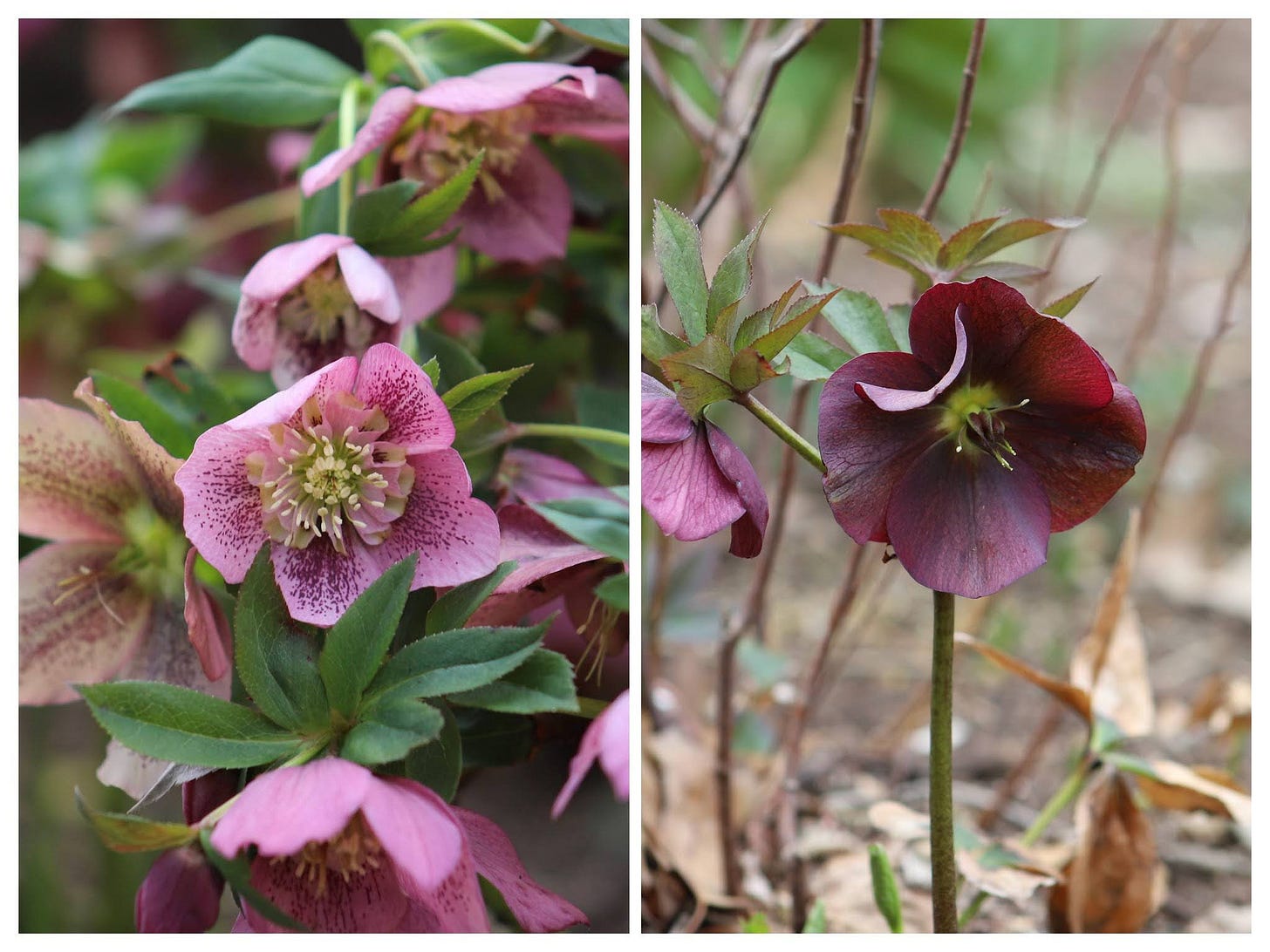
How to Harvest:
Before you even get to harvesting (!), choose and plant newer hellebore varieties with longer stems; buy in spring when you can check them out in spring nursery displays to see what they look like in bloom.
Cut stems close to the ground. Include some foliage if your foliage isn’t too tattered by winter.
For a quick-fix bouquet, pick blooms at any stage and dip stems in hot water before arranging. But for a truly long vase life (up to two weeks), pick hellebores after the anthers have dropped and the seed pod has started to form (photo above on right).
What to pair with hellebores in an arrangement:
Hellebores will still be blooming when the first daffodils come in, and the two make a lovely combo, especially if you grow a variety of daffodil shapes and colors. Include some heuchera (coral bells) foliage, and any other deeply earthy colored shrub foliage in the garden. The arrangement above, which I did at my Dad’s house, includes foliage from two shrubs that I don’t want to grow: Pieris Japonica, because it is toxic to dogs and cats, and nandina, because it is invasive. Good alternatives that provide similar ruddy spring color and would work with the colors of hellebores include ninebark, forsythia, ferns, azalea foliage, and winter heath. (Important to note that hellebores are also toxic if ingested, so don’t eat them!)
One trick I use to augment spring flower arrangements is to include stems from my collection of scented geraniums (above). I haul the potted plants inside over the winter and they get very leggy, making the stems perfect for plucking and using in flower arrangements. They are very long-lasting. The vase above includes a double white daffodil and an azalea sprig as well.
If your hellebores are coming in with mostly short stems, trim them and float the blossoms in a bowl.
One last growing tip:
Don’t get discouraged if your hellebores don’t yield a lot the first few years. They are survivors and will ultimately spread and yield bountifully. While they like shade in the summer, they prefer as much sun as possible in the winter. And I have noticed they like protection from the wind as well. Mine growing snugly against a deck are more bodacious than those exposed on a slope.
🌺





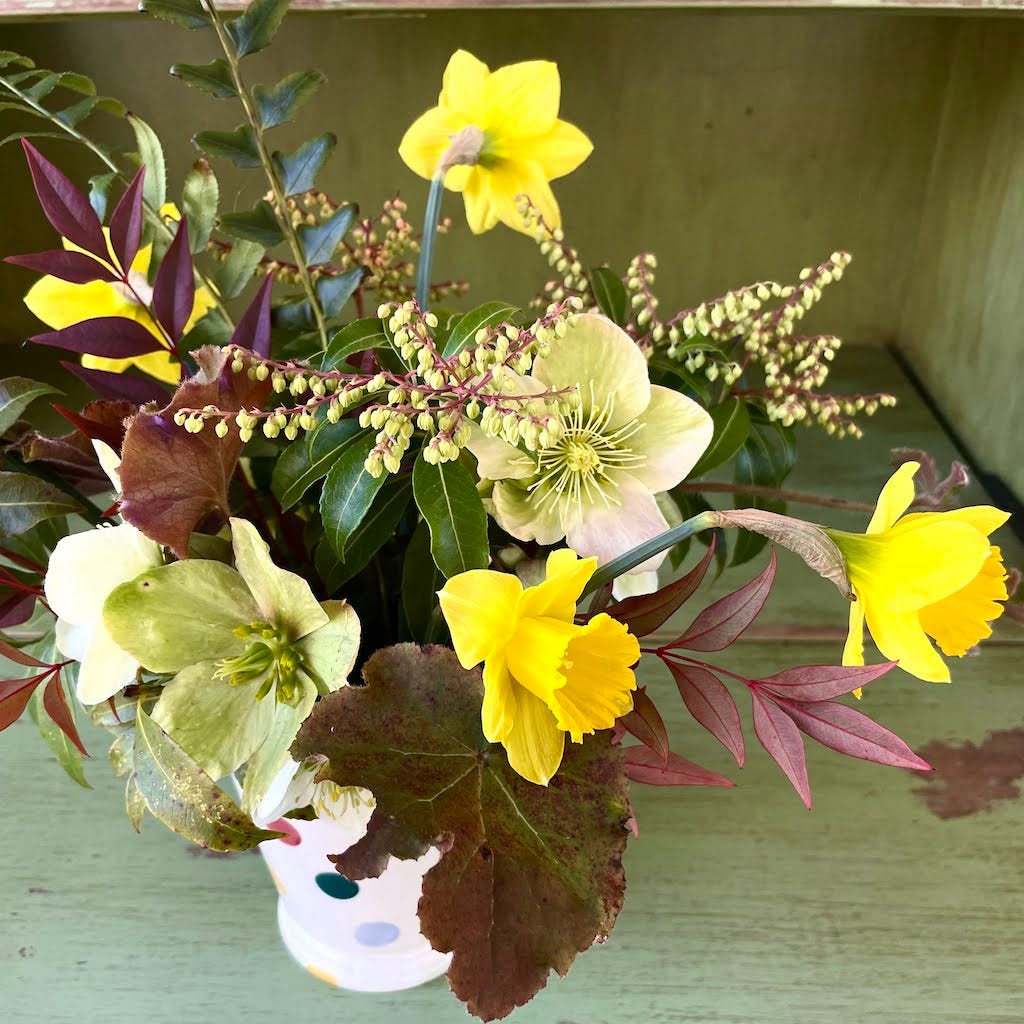
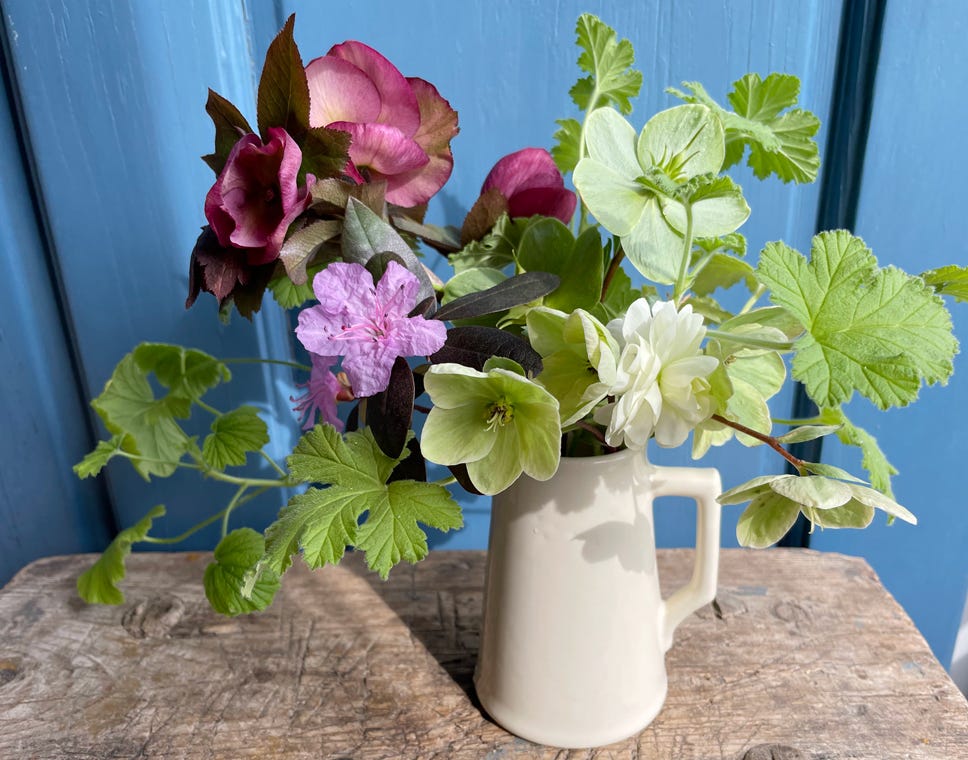

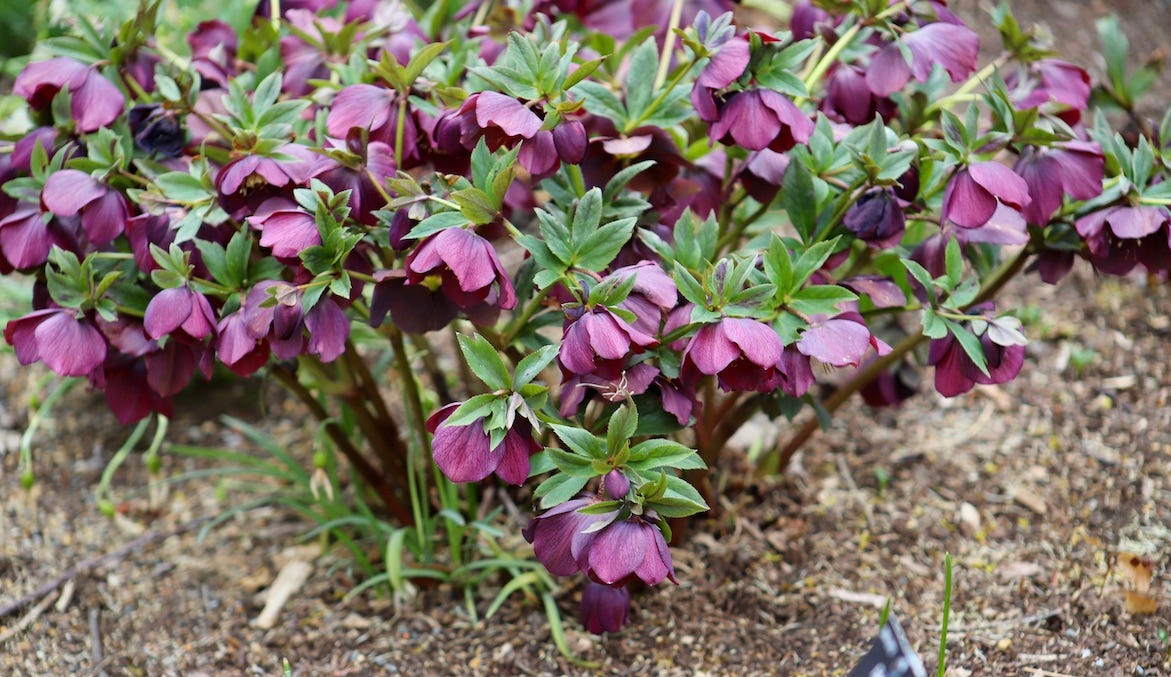
I so appreciate this reminder that hellebores are good for picking, thanks for the tips about how to make the most of those lovely early blooms.
Mine are looking so beautiful and I’m always hesitant to pick them. No more! I will pluck a bouquet today!